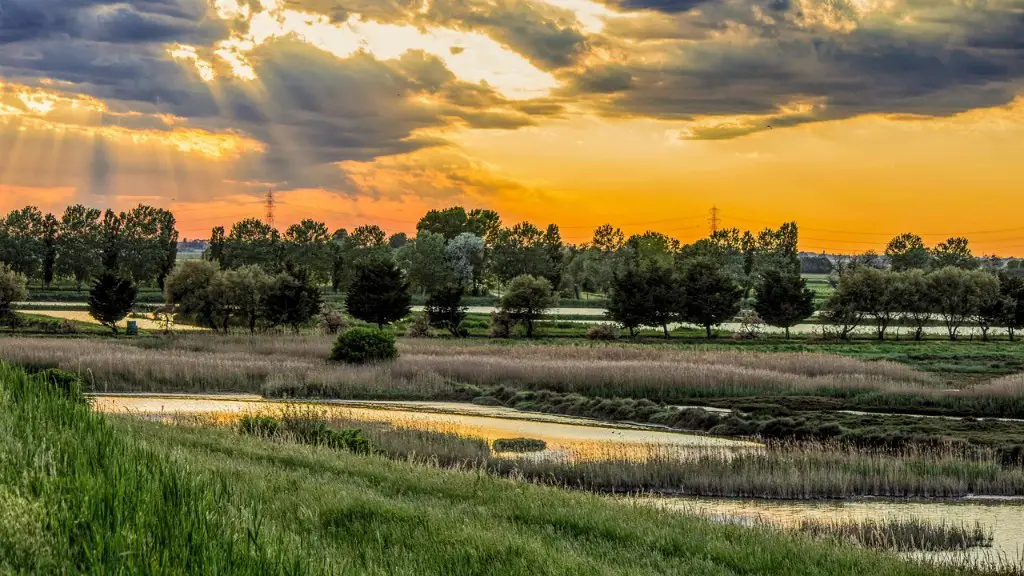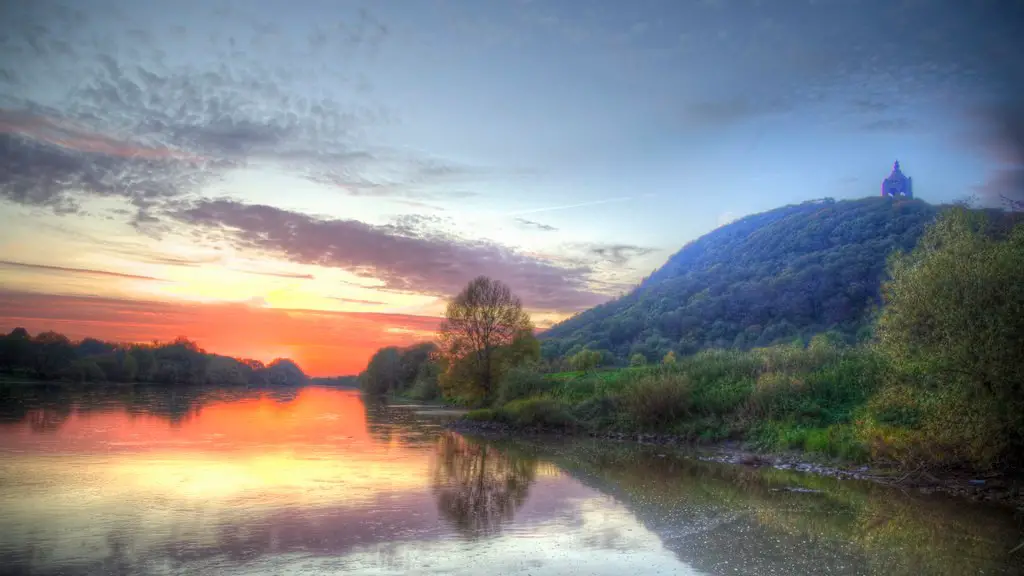What State Does the Mississippi River Start In?
The mighty Mississippi River, the second-longest river in the United States, is an integral part of American history and culture.It flows through 10 states and extends more than 2,340 miles from its source to its mouth at the Gulf of Mexico. But where and what state does the Mississippi River start in ?
Going right back to the beginning, the Mississippi River starts in the northern part of the United States in Lake Itasca, located in the state of Minnesota. The small lake spans just 2,000 acres and reaches a depth of only 45 feet, making it the ideal spot for a river to begin.
The source of Lake Itasca is unknown, but it is believed to be a mix of melted snow from the surrounding area and groundwater that rises naturally. From the lake’s waters, the Mississippi River begins a journey of 2,340 miles that winds through the states of Wisconsin, Iowa, Illinois, Missouri, Kentucky, Tennessee, Arkansas, Mississippi, and Louisiana before flowing out into the Gulf of Mexico.
Historians have long been fascinated by the Mississippi River and its role in the history of America. According to experts, the river served as an important transportation route for Native American tribes that lived along its banks, and it was used heavily by traders and settlers who wanted to explore and expand westward.
The river also played a key role in the expansion of the United States, with President Thomas Jefferson playing an important part in opening it up to commerce and exploration. In 1803, he secured the Louisiana Purchase through a treaty with France, a massive land grab that doubled the size of the nation at the time.
Today, the Mississippi River provides a crucial source of water for millions of people in the Midwest. It’s used for shipping and transportation, as well as for hydroelectric power and recreation. It serves as a vital link between the Midwest and the Gulf of Mexico, and is an essential part of the Midwest economy and culture.
The river is also home to a variety of wildlife, including birds, fish, reptiles and amphibians.The mighty Mississippi River is a remarkable force of nature and an integral part of American history, and it has its beginnings in the state of Minnesota.
For centuries, the Mississippi River posed an immense challenge to shipping and navigation. Throughout its course, the river sees frequent flooding, which often changes its bed and makes navigation more difficult. In addition, the river contains numerous sandbars, snags and other obstacles that boats had to navigate carefully.
In order to make the river safer, the U.S. Army Corps of Engineers was tasked with dredging and improving sections of the river. The Corps of Engineers also refortified the banks of the Mississippi, created levees and built dams, which has significantly reduced the number of floods that occur along the river.
In addition, the Corps of Engineers has built a series of locks and dams along the Mississippi that allow boats to travel from one pool of water to another with ease. Many boats now use the Mississippi River as the highway for goods and services, transporting everything from grain to crude oil.
Thanks to the work of the U.S. Army Corps of Engineers, the Mississippi River is now much safer and easier to navigate than it has been in centuries past.
Environmental Challenges
The Mississippi River faces a number of environmental challenges.The pollution in the river has been increasing over time, due to runoff from farms, factories and sewage plants. In addition, the river has seen an increase in silt and sedimentation over the years, which can reduce water quality and cause the water to become murkier.
The increasing levels of nitrogen and phosphorus in the river due to fertilizer and agricultural runoff has also caused an increase in the number of harmful microorganisms such as algae blooms. These blooms can decrease oxygen levels in the water, which can be devastating for the fish and other aquatic species that live in the Mississippi River.
The good news is, efforts have been made to reduce the amount of pollution in the Mississippi River. In recent years, conservationists have worked to restore the river’s health and improve water quality. In addition, a number of federal, state and local governments have implemented restrictions on pollution and taken steps to improve the river’s water quality.
The future of the Mississippi River looks much brighter today thanks to these efforts.
Recreational Opportunities
The Mississippi River is also a great destination for outdoor recreation and adventure. The river is a popular destination for fishing, boating, hiking, camping and more. In addition, the riverbanks are home to numerous parks and nature preserves.
The river is also a popular destination for birdwatchers, as it’s home to a wide variety of waterfowl and other birds. The range of waterfowl includes the bald eagle, the American white pelican and the great blue heron.
The river also serves as a scenic backdrop for festivals, concerts, and other events. Every year, the Mighty Mississippi Music Festival celebrates its namesake with three days of live entertainment and attractions in the Mississippi River town of Red Wing, Minnesota.
The Mississippi River is an amazing place to explore and enjoy nature. Whether you’re looking to take in the breathtaking views, immerse yourself in the local culture, or just relax and enjoy the beauty of the area, it’s a great destination for outdoor enthusiasts.
Restoration Efforts
In recent years, there have been numerous efforts to restore and protect the Mississippi River. The Mississippi River Alliance was founded in 2010 with the goal of creating a group to protect the river from pollution and over-exploitation. The Alliance works with numerous researchers, institutions and government agencies to identify and reduce sources of pollution, mitigate damage and improve water quality.
The Mississippi river is an artificial border between the states of Arkansas, Missouri and Mississippi. The Great Rivers Partnership is an effort to build bridges between these states and share cost and resources to protect and restore the river.
The Partnership helps to coordinate restoration efforts, protect ecosystems and conserve wildlife habitats along the river. This includes efforts to reduce riverside erosion, restore wetlands and support species that rely on the river for their habitat.
In addition, the Partnership works to promote awareness of the river and provide educational resources to the public. By fostering an appreciation of the importance of the river, the Partnership hopes to ensure that the Mississippi River remains an integral part of American life for generations to come.
Economic Role
The Mississippi River plays a crucial economic role for the Midwest and the United States as a whole. The river serves as an important transportation and communication hub, as well as a key source of hydroelectric power.
The river also supports a variety of industries in the Midwest, including manufacturing, agriculture, fishing and tourism. In addition, the river is a major source of jobs and economic opportunity throughout the region.
The river also serves as an important recreational area for the Midwest, providing opportunities for fishing, boating, camping, and more. As a result, the region benefits greatly from the jobs and economic opportunities created by the Mississippi River.
The Mississippi River is an essential part of the Midwest economy, and its ongoing protection and preservation are necessary for the region’s long-term prosperity.
Conclusion
The Mississippi River is an integral part of American history and culture, as well as an important ecosystem and economic hub for the Midwest. From its humble beginnings in Lake Itasca, Minnesota to its mouth in the Gulf of Mexico, the Mississippi River is a remarkable force of nature that is sure to remain an important part of the American landscape for generations to come.





